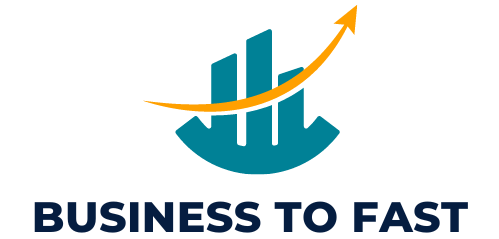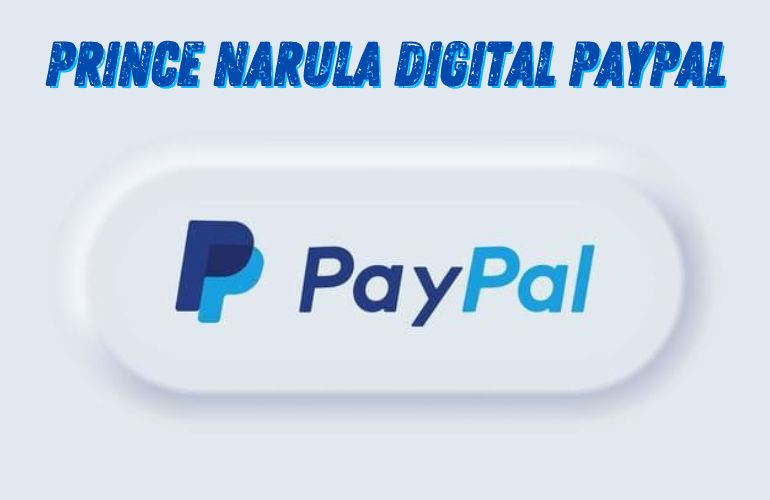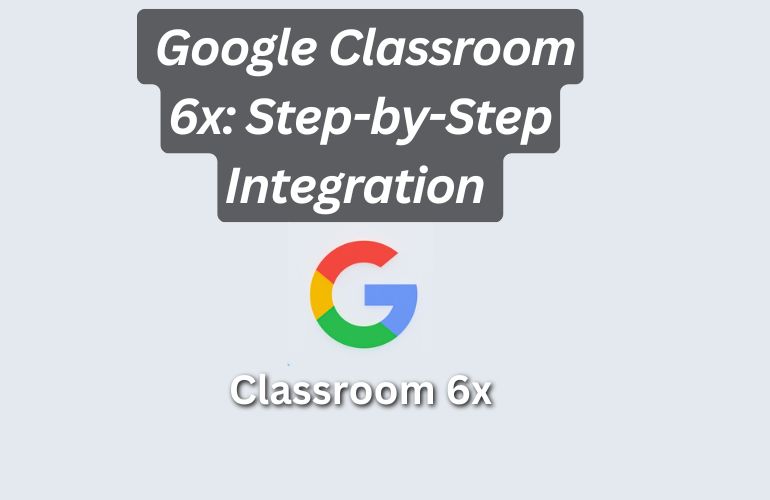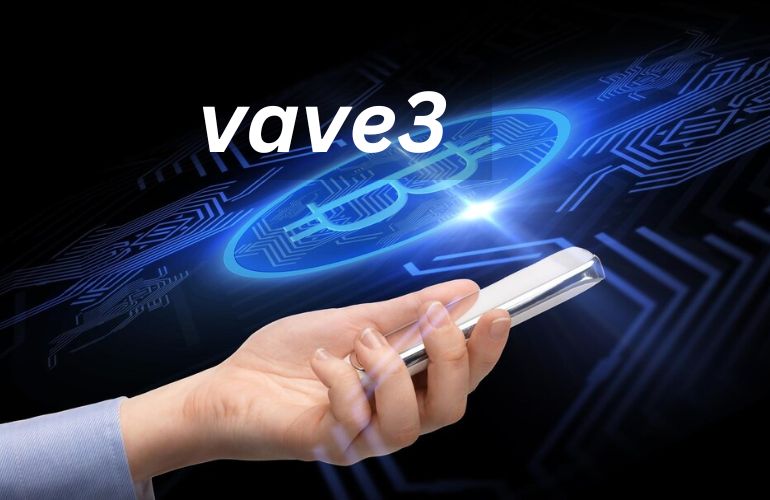
In today’s interconnected world, effective communication across languages is more important than ever. This article introduces “Überzetsen,” a powerful tool for translation and cultural exchange. Whether for business, travel, or personal use, Überzetsen offers solutions that go beyond simple word-for-word translation. Discover how this innovative service can break language barriers and foster global understanding. Read on to explore the many facets and applications of Überzetsen, and how it can transform the way we communicate across cultures.
Understanding Überzetsen
Definition and Origin
Überzetsen, a term derived from the German language, translates to “translation” in English. The word embodies more than just linguistic conversion; it signifies a bridge between cultures, allowing for the seamless exchange of ideas and information. The origin of the term highlights its deep-rooted connection to the rich tradition of translation in European history.
Historical Context and Significance
The practice of translation has a long history, dating back to ancient civilizations where texts were translated to spread knowledge across different cultures. In medieval Europe, translators played a crucial role in disseminating scientific, philosophical, and literary works. Überzetsen continues this legacy, adapting to the needs of the modern world by incorporating advanced technologies and methodologies.

The Essence of Überzetsen
At its core, Überzetsen is about conveying meaning accurately and effectively across languages. This goes beyond mere word substitution, requiring an understanding of context, cultural nuances, and the intent behind the original message. Whether it’s translating a business document, a literary work, or a social media post, Überzetsen aims to preserve the original essence while making it accessible to a new audience.
How Überzetsen Works
Überzetsen employs a combination of human expertise and technological tools to achieve high-quality translations. Human translators bring their knowledge of linguistic subtleties and cultural contexts, ensuring that translations are not only accurate but also resonate with the target audience. Technological advancements, such as machine translation and computer-assisted translation tools, enhance this process by providing speed and consistency.
Human translators review and refine machine-generated translations, ensuring that the final output is both accurate and contextually appropriate. This collaborative approach leverages the strengths of both human and machine capabilities, resulting in translations that are reliable and culturally relevant.
Überzetsen stands as a testament to the evolving nature of translation, merging traditional methods with cutting-edge technology to meet the diverse needs of a global audience. This section has provided a foundational understanding of what Überzetsen is and how it operates, setting the stage for a deeper exploration of its applications and benefits in the following sections.
The Role of Überzetsen in Various Fields
Business Communication
In the business world, clear and accurate communication is fundamental. Überzetsen helps companies break language barriers, enabling them to reach global markets. It translates marketing materials, legal documents, and internal communications, ensuring that messages are understood accurately. Effective translation helps businesses build strong relationships with international clients and partners, leading to better collaboration and increased opportunities.
Travel and Tourism
The travel and tourism industry thrives on multicultural interaction. Überzetsen plays a vital role in this sector by translating travel guides, websites, and promotional materials. It helps travelers understand local customs, navigate foreign cities, and enjoy their experiences without the language barrier. For businesses in the tourism industry, providing information in multiple languages enhances customer satisfaction and broadens their appeal.
Academic Research
Academic research often requires collaboration across borders. Überzetsen facilitates this by translating research papers, academic journals, and conference presentations. Researchers can share their findings with a global audience, contributing to the collective knowledge in their fields. Access to translated research also allows students and academics to learn from a broader range of sources, enriching their studies and advancing their work.
Language Learning
Language learners benefit significantly from accurate translations. Überzetsen aids in creating educational materials, including textbooks, apps, and online courses. These resources help learners understand the intricacies of a new language and its cultural context. By providing translations that are both accurate and culturally relevant, Überzetsen supports effective language acquisition and fosters a deeper appreciation of different cultures.
Social Media and Content Creation
In the digital age, content creation is a global endeavor. Überzetsen helps creators reach international audiences by translating blogs, videos, and social media posts. Accurate translations preserve the original tone and intent, ensuring that the content resonates with diverse audiences. This expands the reach of creators and allows for more inclusive and engaging online communities.
Emergency Situations
During emergencies, clear communication can save lives. Überzetsen provides vital translation services for emergency alerts, health guidelines, and safety instructions. This ensures that essential information reaches all affected individuals, regardless of their language. Accurate translations in emergency situations help coordinate responses and provide critical support to those in need.
Überzetsen proves its value across various fields by enabling effective communication and fostering understanding. Whether in business, travel, academia, language learning, content creation, or emergency response, Überzetsen bridges language gaps and enhances interactions on a global scale.
Techniques and Applications of Überzetsen
Overview of Translation Methods
Translation methods vary based on the content and purpose. Überzetsen employs a blend of human expertise and advanced technology to achieve precise and meaningful translations. Human translators contribute their deep understanding of languages and cultural contexts, while technology provides speed and consistency. The methods range from literal translations for technical documents to more adaptive approaches for creative content, ensuring that the final product meets the specific needs of each project.
Adapting with Creativity and Precision
Translation is not just about converting words but about conveying the intended message accurately. Überzetsen focuses on maintaining the original tone, style, and context. This requires creativity and precision, especially when dealing with idiomatic expressions, humor, or culturally specific references. By understanding the nuances of both the source and target languages, Überzetsen ensures that translations are both accurate and engaging.
Maintaining Context and Nuance
Context is crucial in translation. A word or phrase can have different meanings depending on the context in which it is used. Überzetsen prioritizes understanding the broader context to maintain the original message’s intent. This includes recognizing cultural subtleties and adapting translations to fit the target audience’s expectations. By preserving context and nuance, Überzetsen delivers translations that are true to the original content.
Handling Idioms and Cultural References
Idioms and cultural references often pose challenges in translation. They carry meanings that are not directly translatable. Überzetsen handles these challenges by finding equivalent expressions in the target language that convey the same meaning. When direct equivalents do not exist, explanations or adaptations are used to ensure that the original message is understood. This approach helps maintain the cultural richness of the content.
Techniques Used in Überzetsen
Überzetsen employs a variety of techniques to achieve high-quality translations. These include:
- Human Translation: Professional translators bring their expertise to the table, ensuring accuracy and cultural relevance.
- Machine Translation: Advanced algorithms provide quick and consistent translations, ideal for large volumes of text.
- Computer-Assisted Translation (CAT) Tools: These tools aid translators by providing suggestions, maintaining consistency, and managing terminology.
- Post-Editing: Human editors review and refine machine-generated translations to improve quality and accuracy.
By combining these techniques, Überzetsen ensures that each translation project meets the highest standards of quality and effectiveness.
Überzetsen’s approach to translation balances creativity, precision, and technological innovation. Through various methods and techniques, it delivers translations that are not only accurate but also culturally resonant. This commitment to quality makes Überzetsen a reliable choice for diverse translation needs, ensuring effective communication across languages and cultures.
Technological Advancements in Überzetsen
Machine Translation and AI
Machine translation has seen remarkable progress with the advent of artificial intelligence (AI). AI-powered algorithms analyze vast amounts of data to improve translation accuracy. These systems learn from each translation, continuously enhancing their performance. This technology allows for quick translations, making it ideal for handling large volumes of text in real-time. Examples include Google Translate and other AI-based translation services, which offer immediate, albeit sometimes imperfect, translations.

Computer-Assisted Translation (CAT) Tools
CAT tools support human translators by providing a suite of features designed to improve efficiency and consistency. These tools offer translation memories, which store previously translated phrases and sentences for reuse. This helps maintain consistency across documents and speeds up the translation process. CAT tools also include terminology databases that ensure correct usage of industry-specific terms. By integrating these tools, Überzetsen enhances the quality and speed of its translation services.
Real-Time Translation and Augmented Reality
Real-time translation technology has become increasingly sophisticated. Apps and devices now offer instant translation of spoken language, which is particularly useful in situations like travel and international meetings. Augmented reality (AR) further enhances this capability by translating text in the user’s environment, such as street signs or menus, in real-time. This technology makes communication more accessible and immediate, breaking down language barriers on the spot.
Integration of Machine Learning and Neural Networks
Machine learning and neural networks have revolutionized translation by enabling systems to understand context and nuances better. Neural machine translation (NMT) models analyze entire sentences rather than just individual words, leading to more coherent and contextually accurate translations. These models are trained on vast datasets, allowing them to understand the subtleties of different languages and produce translations that are more natural and fluent.
Enhanced Multimodal Translation
Multimodal translation combines text, audio, and visual elements to provide a richer translation experience. This approach is particularly useful in multimedia content, such as videos and interactive websites. By translating not only the text but also the audio and visual components, multimodal translation offers a more integrated and comprehensive understanding of the content. Überzetsen utilizes this technology to deliver high-quality translations across various media formats.
Personalization and Customization
Modern translation technology allows for greater personalization and customization. Systems can be tailored to meet specific needs, such as adjusting the formality level of the translation or incorporating preferred terminology. This customization ensures that the translation aligns with the user’s requirements and preferences, enhancing the overall effectiveness and satisfaction of the service.
Advancements in Artificial Intelligence
AI continues to drive innovation in translation technology. Future advancements may include even more sophisticated neural networks, improved real-time translation capabilities, and enhanced personalization features. As AI technology evolves, it will enable even more accurate and contextually aware translations, further bridging the language gap and facilitating global communication.
Augmented Reality and Real-Time Translation
The combination of AR and real-time translation offers exciting possibilities. Imagine wearing smart glasses that translate foreign text in your field of vision or using an app that provides real-time subtitles for conversations in different languages. These advancements make it easier to navigate foreign environments and communicate with people from different linguistic backgrounds.
Überzetsen leverages these technological advancements to provide state-of-the-art translation services. By integrating AI, machine learning, CAT tools, and multimodal translation, Überzetsen ensures high-quality, efficient, and contextually accurate translations. These innovations continue to transform the field of translation, making global communication more accessible and effective than ever before.
Challenges and Solutions in Modern Translation
Maintaining Accuracy and Consistency
One of the main challenges in translation is ensuring both accuracy and consistency across large texts or multiple documents. Inconsistent terminology or slight inaccuracies can alter the intended meaning, leading to misunderstandings. To address this, Überzetsen employs advanced tools like translation memories and glossaries that help maintain uniformity throughout the translation process. These tools store previously translated terms and phrases, providing translators with references that ensure consistency.
Balancing Speed and Quality
In a fast-paced world, the demand for quick translations is high. However, speed often comes at the expense of quality. Überzetsen tackles this by integrating machine translation for initial drafts followed by human post-editing. This hybrid approach leverages the efficiency of machines and the nuanced understanding of human translators, ensuring that the final product is both swift and of high quality. This method helps in managing tight deadlines without compromising on accuracy.
Adapting to Industry-Specific Terminology
Different industries have specialized vocabularies that require precise translation to maintain meaning and clarity. Medical, legal, and technical documents, for example, contain jargon that must be accurately translated to avoid serious errors. Überzetsen addresses this by employing translators with expertise in specific fields and utilizing terminology databases. These databases store industry-specific terms, ensuring that translations are accurate and contextually appropriate.
Ethical Considerations and Bias Mitigation
Translations can sometimes unintentionally introduce biases or misrepresentations. It is important to approach translation with sensitivity to cultural and ethical considerations. Überzetsen implements thorough review processes where translations are checked for potential biases. Additionally, training translators in cultural competence helps in producing translations that are respectful and unbiased. This careful approach ensures that the translated content is fair and culturally sensitive.
Handling Idioms and Cultural References
Idioms and cultural references present unique challenges as they often do not have direct equivalents in other languages. Translating these requires a deep understanding of both the source and target cultures. Überzetsen employs creative solutions by finding equivalent expressions or providing explanations that convey the intended meaning. This approach helps preserve the cultural richness of the original content while making it understandable to the target audience.
Managing Large-Scale Projects
Translating large volumes of text or managing multilingual projects can be complex and time-consuming. Überzetsen uses project management tools that streamline the workflow, from initial translation to final review. These tools coordinate the efforts of multiple translators, track progress, and manage deadlines efficiently. By organizing the translation process, Überzetsen ensures that even large-scale projects are completed on time and to a high standard.
Quality Assurance and Proofreading
Quality assurance is a critical step in the translation process. Überzetsen employs rigorous proofreading and editing stages to catch any errors or inconsistencies. This involves multiple rounds of review by different translators and editors, ensuring that the final product is polished and error-free. Quality assurance protocols help maintain the high standards expected in professional translation.
Adapting to Technological Changes
The field of translation is continuously evolving with new technological advancements. Staying updated with these changes is essential for delivering high-quality translations. Überzetsen invests in ongoing training for its translators and regularly updates its technological tools. By embracing new technologies, Überzetsen remains at the forefront of the translation industry, providing cutting-edge solutions to its clients.
Überzetsen addresses the challenges in modern translation with a combination of human expertise, advanced technology, and meticulous processes. This approach ensures that translations are accurate, consistent, and culturally sensitive, meeting the diverse needs of clients across various industries.
The Human Touch and Ethical Considerations
The Role of Human Insight
Human translators bring invaluable insight to the translation process. Their understanding of linguistic nuances, cultural contexts, and subtleties in meaning ensures that translations are not only accurate but also resonate with the target audience. This human element is crucial in capturing the tone, style, and intent of the original content, which machines often struggle to replicate.

Cultural Sensitivity in Translation
Cultural sensitivity is a key aspect of effective translation. Human translators are adept at recognizing and adapting cultural references, idioms, and expressions to suit the target culture. This sensitivity helps avoid misunderstandings and potential offenses, making the translated content more relatable and appropriate for the intended audience. Überzetsen prioritizes cultural awareness in all its translation projects to maintain the integrity and impact of the original message.
Honoring Cultural Nuance
Translations that honor cultural nuances go beyond mere word substitution. They involve a deep understanding of the cultural significance behind words and phrases. Überzetsen employs translators who are not only fluent in the target language but also deeply familiar with its culture. This ensures that the translations are authentic and respectful, preserving the original context and meaning.
Ethical Considerations in Überzetsen
Ethics play a significant role in translation. Überzetsen adheres to strict ethical guidelines to maintain the trust and respect of its clients. This includes confidentiality agreements to protect sensitive information, accuracy in representing the source material, and a commitment to unbiased translations. Ethical practices ensure that the translations are fair, respectful, and uphold the integrity of the original content.
Addressing Bias in Translation
Bias can inadvertently creep into translations, leading to skewed or inaccurate representations. Überzetsen tackles this issue by employing diverse teams of translators and reviewers who cross-check each other’s work. This collaborative approach helps identify and eliminate potential biases, ensuring that the translations are objective and balanced.
The Human Element in Machine Translation
While machine translation offers speed and efficiency, the human element remains essential for quality. Überzetsen combines machine translation with human post-editing to refine and perfect the output. Human translators review machine-generated texts, correcting errors, and enhancing the translation’s quality and accuracy. This hybrid model leverages the strengths of both technology and human expertise.
Training and Continuous Learning
To maintain high standards, Überzetsen invests in the continuous training and development of its translators. This includes staying updated with the latest linguistic trends, technological advancements, and cultural developments. Regular training ensures that translators are equipped to handle a wide range of subjects and maintain the quality of their work.
Building Trust with Clients
Trust is a cornerstone of the translation industry. Überzetsen builds trust with its clients through transparency, reliability, and consistent quality. By delivering accurate and culturally sensitive translations, Überzetsen establishes long-term relationships with clients, who can rely on their services for all their translation needs.
The human touch in translation adds a layer of depth and authenticity that technology alone cannot achieve. By focusing on cultural sensitivity, ethical practices, and continuous learning, Überzetsen ensures that its translations are accurate, respectful, and trustworthy. This commitment to quality and integrity makes Überzetsen a preferred choice for clients seeking reliable translation services.
Conclusion
Überzetsen stands out as a versatile and effective tool in the field of translation, bridging language gaps across various industries. From business communication and travel to academic research and social media, Überzetsen provides reliable solutions tailored to specific needs. By combining human expertise with advanced technology, it ensures accuracy, cultural relevance, and ethical standards. The commitment to quality and continuous improvement positions Überzetsen as a trusted partner in fostering global understanding and communication. As technological advancements continue to shape the future of translation, Überzetsen remains dedicated to delivering high-quality, culturally sensitive translations that connect people and ideas across the world.
FAQs
1. What types of documents can Überzetsen translate?
Überzetsen can handle a wide range of documents, including business reports, legal contracts, academic papers, marketing materials, technical manuals, and social media content. Its versatility makes it suitable for various industries and purposes.
2. How does Überzetsen maintain translation accuracy?
Überzetsen combines machine translation with human post-editing. Professional translators review and refine machine-generated translations to ensure accuracy and cultural relevance. This hybrid approach leverages the strengths of both technology and human expertise.
3. Can Überzetsen handle industry-specific terminology?
Yes, Überzetsen employs translators with expertise in specific fields such as medical, legal, and technical sectors. It also uses terminology databases that store industry-specific terms, ensuring precise and contextually appropriate translations.
4. How does Überzetsen address cultural nuances in translation?
Überzetsen prioritizes cultural sensitivity by employing translators who are familiar with the target culture. This approach helps adapt idioms, expressions, and cultural references accurately, preserving the original message’s intent and relevance.
5. What technological tools does Überzetsen use to enhance translation quality?
Überzetsen utilizes advanced tools such as machine translation, computer-assisted translation (CAT) tools, and neural machine translation (NMT) models. These technologies, combined with human expertise, ensure high-quality and efficient translations.









